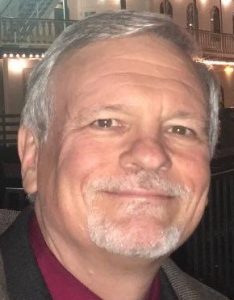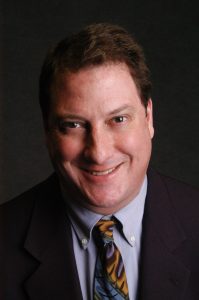ITS Researchers Part of Historic Hydrogen Investment in California
November 15, 2023

Lew Fulton, PhD, UC Davis

Tim Lipman, PhD, UC Berkeley
Last month the United States Department of Energy (DOE) announced that California will receive up to $1.2 billion to accelerate the build out of renewable hydrogen projects and infrastructure across the state. Implementation will be led by the Alliance for Renewable Clean Hydrogen Energy Systems (ARCHES)–an unprecedented partnership of over 400 public and private sector groups, including the University of California.
We caught up with Lew Fulton, Director of the Sustainable Transportation Energy Pathways Program (STEPS+) at UC Davis, and Tim Lipman, Co-Director of the Transportation Sustainability Research Center (TSRC) at UC Berkeley to learn more about the significance of ARCHES for California and the nation, how they will be involved in this historic effort, and what they are currently working on.
Q: What’s the significance of the ARCHES project and the DOE investment in hydrogen more broadly?
Fulton: The DOE selected seven hydrogen hubs located across the country, with California being one of the largest in terms of funding (over $1 billion). This clearly signifies the beginning of the “hydrogen era” in the U.S. and in California. For the ARCHES project in California, all hydrogen will be renewable, which makes this new era even more significant. Hydrogen will enable deep decarbonization of many sectors that would likely struggle otherwise, like trucking.
Lipman: In addition to being based on renewable sources, the hydrogen to be produced through the ARCHES project will be close to carbon neutral. The various projects under ARCHES are expected to reduce greenhouse gas emissions as well as air pollutants, and help us move away from the use of fossil fuels.
Q: From your standpoint, what are the critical questions, opportunities, and/or challenges for hydrogen in the transportation sector over the next 3 to 5 years?
Fulton: We have to align the planning and execution of four things: hydrogen supply, refueling station construction, production/sales of hydrogen vehicles, and purchases of those vehicles. ARCHES is very focused on supporting that alignment. We must also work together to bring down costs, such as the cost of purchasing vehicles and the cost of hydrogen. We should be able to succeed in lowering costs if we scale up our system over the next five years or so.
Lipman: Policy development will also be very important, especially for California’s Low Carbon Fuel Standard and the Federal Production Tax Credit rules for hydrogen under the Inflation Reduction Act.
Q: How will you be participating in and/or contributing to the ARCHES effort?
Fulton: I’m the Chair of the transportation working group for ARCHES.
Lipman: And I’m serving as the Chair for the ports working group.
Fulton: In these roles, we are leading developments of white papers that describe goals and challenges, and helping to coordinate efforts. In particular, we are at the interface between ARCHES management (led by the UC Office of the President and the Governor’s Office of Business and Economic Development, GO-Biz), industry, and other stakeholders. We are also involved in information gathering, dissemination, and coordination. And of course, we will be conducting research in support of planning what should and will happen over the next five years and beyond.
Lipman: We are also both supporting the core systems analysis team within the ARCHES lead group. That group will play a key role in guiding project development to meet the emissions reduction and economic targets, as well as providing progress and evaluation assessments to DOE.
Q: What are some of your recent and in-progress work related to hydrogen?
Lipman: I’ve been testing hydrogen vehicles for years in real-world settings and also operated Northern California’s first 700-bar hydrogen station at the Richmond Field Station for several years. My vehicle testing work is being replaced with mostly modeling work now that vehicles and stations have become commercial realities. Recent related work includes modeling networks of hydrogen fuel cell goods delivery fleets and drayage trucks for the DOE, and evaluating the life cycle greenhouse gas intensity of different hydrogen pathways. We are also the data analysis and community outreach partner for the NorCAL ZERO project, led by the Center for Transportation and the Environment, that is piloting the use of 30 Class-8 Hyundai Xcient fuel cell trucks at the Port of Oakland for drayage operation. Lew and I also recently collaborated with Jeff Reed at UC Irvine to produce a series of policy briefs that address priority questions facing the state legislature, including potential uses of hydrogen, likelihood of green hydrogen becoming cost competitive, and why it’s more important to focus on the carbon intensity of hydrogen rather than the color.
Fulton: Our hydrogen and fuel cell work at UC Davis primarily focuses on coordination between different components of a hydrogen system, with an emphasis on freight trucking. Recent and current projects include modeling system expansion; developing a spatial road map for near- and long-term hydrogen planning; and looking at aspects such as the optimal timing, location, and sizing of hydrogen stations oriented toward heavy duty trucks. Tim, myself, and others are also collaborating on a new project to map the potential of hydrogen and fuel cell electric vehicles across transportation sectors in California.
Q: How does your work on hydrogen fit into your broader research interests?
Fulton: The Energy Futures research group within ITS-Davis are modelers. We tend to take a systems approach and project system developments out as far as 2050. We primarily focus on how to decarbonize and transition to new technologies. ARCHES planning fits this type of work effort perfectly.
Lipman: At UC Berkeley, we focus on the lowest carbon fuel solutions and their real-world implementation and lessons learned, as well as local and regional systems modeling.
Q: Finally, what is a key message from your research that the general public and/or policymakers should know?
Lipman: While hydrogen has the potential for large benefits across several different sectors, each use case has its own complexities and specific considerations. Realizing these benefits will require lots of careful study and planning, and involvement with a wide range of stakeholders.
Fulton: I’ll add that hydrogen systems need to be built out to a fairly large system before most of the benefits will be realized, and before costs come down to their potential long term levels. We–public agencies, communities, industry partners, non-profit organizations, academic institutions, and others–need to work together and be somewhat patient with this process. Hopefully by 2030, we will see important benefits such as the potential for zero-emission long-haul trucking with minimal refueling disruptions.
